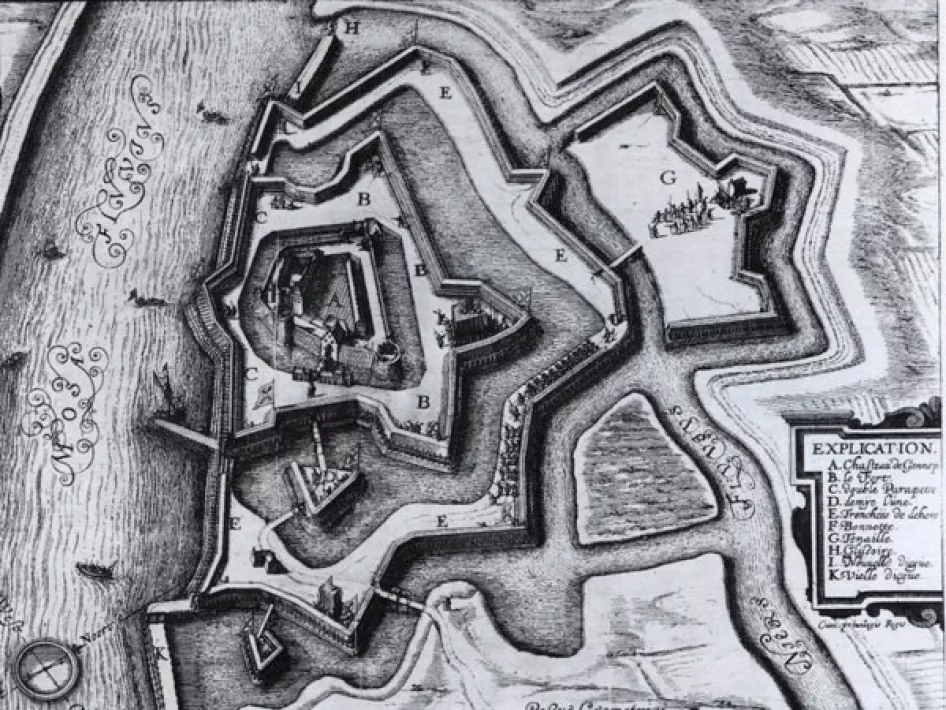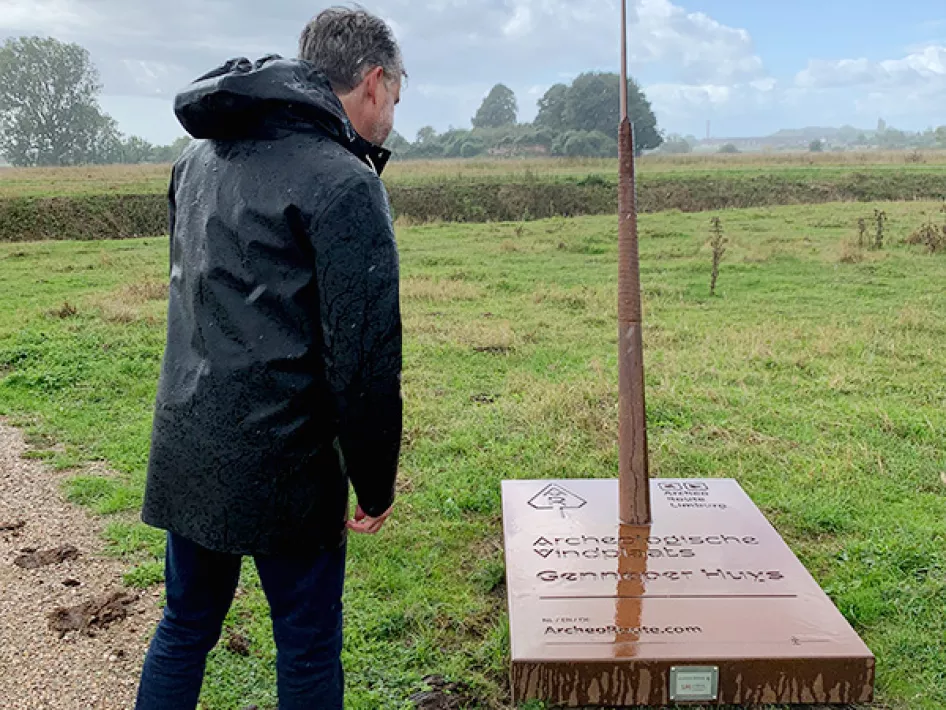The Genneper Huys was a burgh, a fortification situated where the river Niers flows into the Meuse and just a stone’s throw away from the town of Gennep. The Genneper Huys played an important role in the birth of the Netherlands during the Eighty Years’ War.
The foundations of the castle are probably formed by a Roman fortification. This presumption is supported by its strategic positioning; the two rivers and a wadable place to cross the river Niers, where the road running north-south crossed the road running east-west. For a long time, the castle was home to the so-called Lords of Gennep. Around 1080 A.D. H. Norbertus was born into this aristocratic family, as was Jutta of Gennep, the first abbess of the Grevendaal monastery near Asperden, and William of Gennep, the archbishop of Cologne (1349-1362). They were all born into the Van Gennep’s bloodline. The Lords of Gennep seized to exist and after briefly being in hands of the Counts of Gelre, Cleve’s influence started to increase from the 14th century onwards. In 1442, it was sold to the Count of Cleve. During the Dutch Revolt, the Genneper Huys was occupied by multiple invaders; first by the States’ Lords until the Spanish conquered it in 1599, after which it was retaken by the States’ Lords in 1602. In 1635, the Spanish reconquered it and reinforced it, but in 1641, after the Siege of Gennep, the castle was abandoned by stadtholder Frederick Henry.
During the Peace of Münster and Osnabrück, the Genneper Huys and the town of Gennep were assigned to Brandenburg, which essentially belonged to Cleve’s territory. Next, the French returned twice and occupied the castle in 1672 and during the War of the Spanish Succession. This final occupation brought an end to the Genneper Huys. In 1710, the French destroyed the castle. Its stones were reused to build homes in the town of Gennep and to reinforce the banks of the Meuse.
Download the app
If you would like to know more about the Genneper Huys, visit museum Het Petershuis in Gennep. Would you rather look for information online? Check out www.museumhetpetershuis.nl or www.martinustoren.nl


Archaeological site Gennep - The Genneper Huys
Experience the archaeological story from The Genneper Huys. Download the app and get face-to-face on site with our archaeologist. He tells you the history and the importance of The Genneper Huys through most modern virtual technology. This makes you feel as if you transform into the past.
Contact and location
Archeologische vindplaats Gennep - het Genneper Huys
Genneperhuisweg
6591 BS
GENNEP